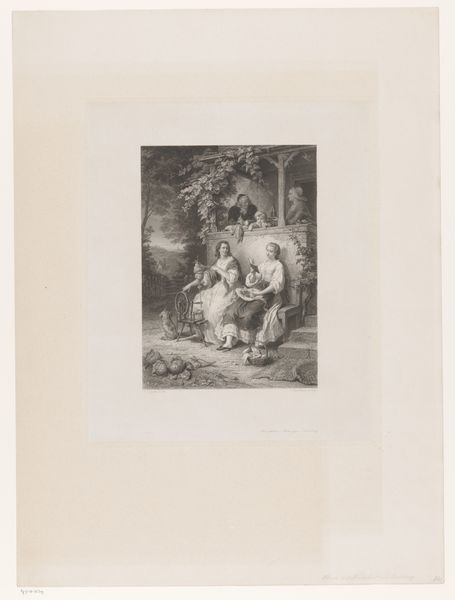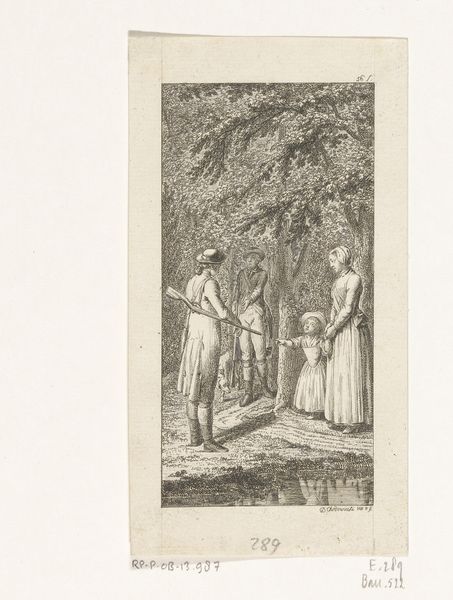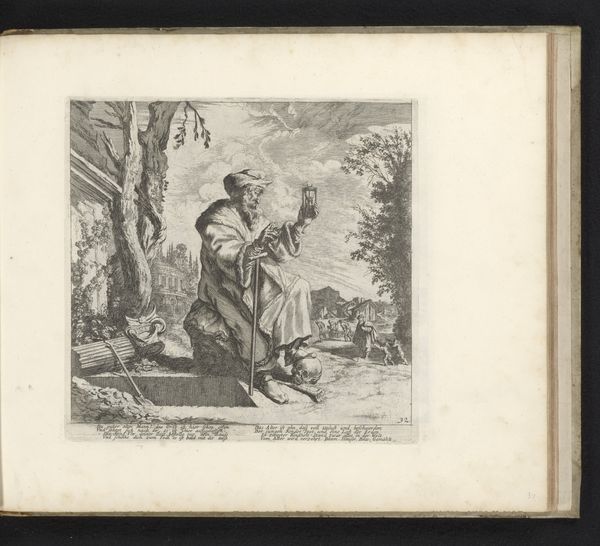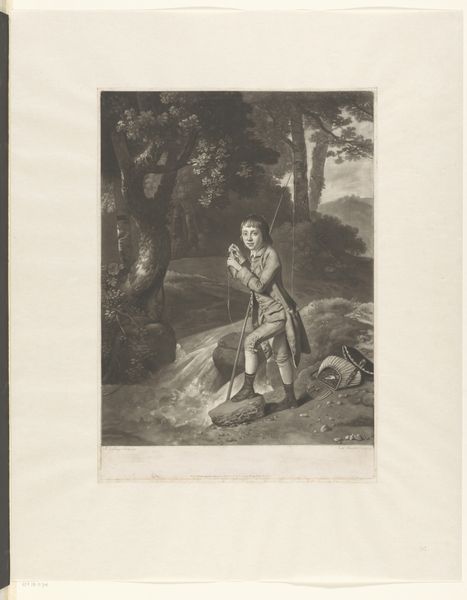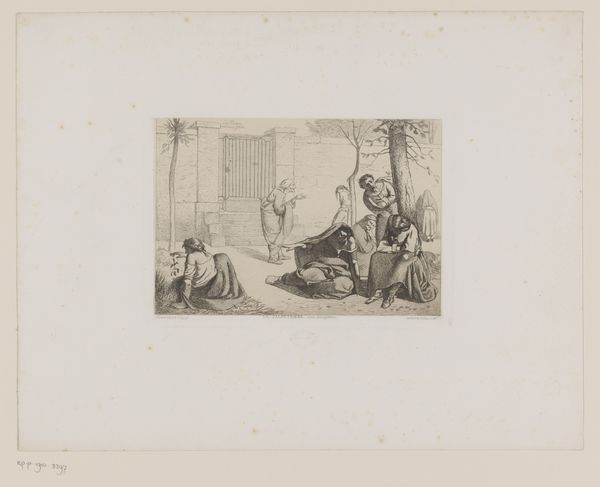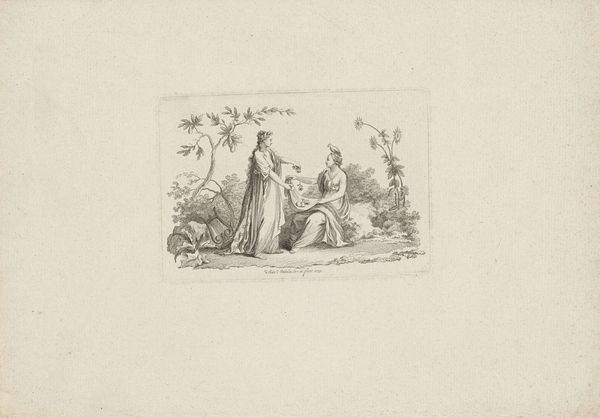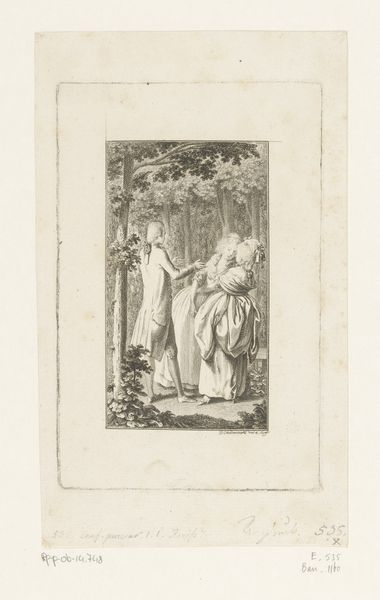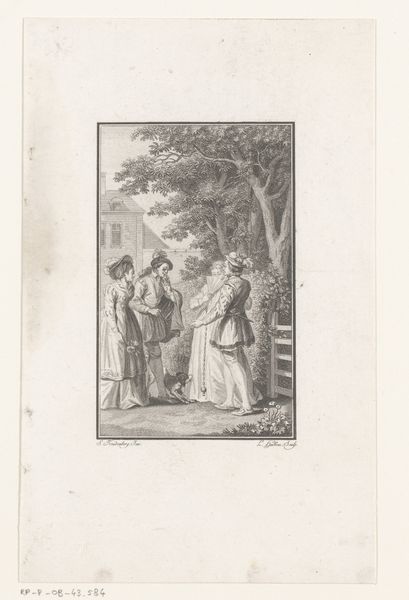
engraving
#
old engraving style
#
romanticism
#
line
#
genre-painting
#
engraving
Dimensions: height 124 mm, width 85 mm
Copyright: Rijks Museum: Open Domain
Curator: This engraving by Daniel Nikolaus Chodowiecki, titled "Aren lezen," or "Gleaning Corn," dates back to 1792. It’s currently held in the collection of the Rijksmuseum. What's your immediate impression? Editor: There's an interesting stillness to it, even though it depicts people at labor. The intricate lines create a sense of both fragility and resolute observation. It reminds me a bit of theatrical staging, with the figures carefully arranged within the landscape. Curator: Considering it’s an engraving, I'm particularly drawn to how Chodowiecki manipulated the medium. The economy of line is astonishing; it seems the narrative potential hinges upon the material capacity of ink on the page. We also need to consider printmaking in this period and its distribution networks of social critique. Editor: Absolutely. And within that context, look at the scene itself. The subject matter— gleaning —speaks to social hierarchy, class disparity, the very tangible power dynamics inherent in land ownership during that era. The seated, elderly figure and the figures laboring recall the lives of those at the lower rungs of society and their dependence on landowners for the most basic of sustenance. How is Chodowiecki, using his tools of labor, situated? Is he providing mere spectacle, or is he making an intervention through visibility? Curator: That's astute. The meticulousness with which Chodowiecki renders the details of clothing, the texture of the foliage - these point to an artist deeply engaged with the physical world, the clothing a marker of station and employment and labor in society. There’s also the question of access: engravings democratized imagery, making them available to a wider audience than paintings, fostering a dialogue about these societal disparities among different social classes who could afford them. Editor: And how different classes consumed art! Looking closely, the standing figure is dressed with markedly more finesse and better clothing, an emblem of property itself, appearing to be mediating or even evaluating. The work evokes broader conversations surrounding philanthropic gesture but, for whom is the benefit intended and who truly accrues value? The narrative and this image are about work, but also *the act* of creating this artwork becomes work on Chodowiecki's part too, circulating those ethics. Curator: A valuable insight. It really underscores how this seemingly simple genre scene operates on multiple layers. Editor: Exactly. A potent distillation of class, labor, and artistic intention. Curator: Well, looking closely at the line, ink, paper, we're really tracing back social codes that circulate right back to us, even centuries on. Editor: Indeed, making us complicit witnesses to their long-held societal observations.
Comments
No comments
Be the first to comment and join the conversation on the ultimate creative platform.
